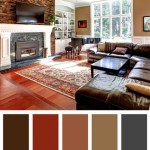How To Decorate a Downstairs Toilet: Maximizing Functionality and Style
The downstairs toilet, often the smallest room in a house, frequently gets overlooked when considering interior design. However, its frequent use by guests and family alike makes it a space worthy of thoughtful attention. Effective decoration can transform this compact area from a purely functional necessity into a stylish and welcoming addition to the home. This article provides a comprehensive guide to decorating a downstairs toilet, focusing on optimizing space, enhancing aesthetics, and creating a comfortable and inviting environment.
Optimizing Space: Efficient Layout and Storage Solutions
Space is invariably limited in a downstairs toilet. Therefore, strategic planning of the layout and incorporation of clever storage solutions are paramount. The primary focus should be on ensuring comfortable movement and accessibility to all fixtures, while maximizing the available area for practical storage and decorative elements.
The toilet itself is, of course, the central fixture. Wall-mounted toilets can create a sense of spaciousness by freeing up floor area. The cistern is concealed within the wall, contributing to a cleaner and more minimalist aesthetic. Traditional close-coupled toilets, while more common, can also be accommodated effectively with careful space planning. The size and shape of the toilet should be proportionate to the overall dimensions of the room.
The sink is another critical element. Compact corner sinks or wall-mounted basins are excellent options for small spaces. Opting for a sink without a pedestal allows for additional storage underneath. Consider installing a slimline vanity unit to provide storage for toiletries, cleaning supplies, and extra towels. Ensure the sink is positioned to allow comfortable access to the toilet and door.
Storage solutions can be integrated into the décor seamlessly. Shelving is a versatile option, particularly floating shelves, which create a visually light and airy feel. These can be used to display decorative items such as small plants, candles, or framed artwork. Over-the-toilet storage units provide additional vertical storage space without encroaching on the floor area. Wire baskets and decorative boxes can be used to organize small items and keep the space tidy.
Mirrors are essential for both functionality and creating the illusion of space. A large mirror above the sink can reflect light and make the room feel larger and brighter. Consider a mirror with built-in storage or a mirrored cabinet to maximize its utility. Strategically placed lighting can also enhance the sense of spaciousness. Avoid bulky light fixtures that can overwhelm the room; instead, opt for recessed lighting or sleek wall sconces.
The choice of door is also a factor. A pocket door, which slides into the wall, can save valuable floor space compared to a traditional swinging door. If a swinging door is unavoidable, ensure it opens outwards, if possible, to avoid obstructing the limited space within the toilet.
Enhancing Aesthetics: Color Palette, Materials, and Decorative Elements
The aesthetic appeal of a downstairs toilet is crucial to creating a positive impression. The selection of color palettes, materials, and decorative elements should be carefully considered to create a cohesive and inviting atmosphere. The goal is to transform the space from a purely functional area into a visually pleasing and welcoming environment for guests and family.
Color plays a significant role in defining the mood and perceived size of the room. Light and neutral colors, such as white, cream, and pale gray, are excellent choices for small spaces, as they reflect light and create a sense of openness. However, this does not preclude the use of bolder colors. A single accent wall in a vibrant hue can add personality and visual interest without overwhelming the room. Dark colors can be used judiciously in larger downstairs toilets to create a more dramatic and luxurious feel.
The choice of materials can significantly impact the overall aesthetic. Tiles are a popular choice for bathroom walls and floors due to their durability and water resistance. Consider large-format tiles to minimize grout lines and create a more seamless look. Mosaic tiles can be used as accents to add texture and visual interest. Natural stone, such as marble or granite, can add a touch of luxury but may require more maintenance. Wood-look tiles offer the warmth and character of wood with the practicality of tile.
Wallpaper is another option for adding pattern and texture to the walls. Choose moisture-resistant wallpaper designed for bathrooms. Bold patterns and textures can create a focal point and add personality to the space. Consider using wallpaper on a single accent wall to avoid overwhelming the room. A subtle textured wallpaper can add depth and visual interest without competing with other decorative elements.
Decorative elements, such as artwork, plants, and accessories, can personalize the space and create a welcoming atmosphere. Framed prints, photographs, or small sculptures can add visual interest to the walls. Choose artwork that complements the color palette and style of the room. Small plants, such as succulents or air plants, can add a touch of greenery and freshness. Candles, diffusers, and decorative soaps can enhance the sensory experience. Ensure that all decorative elements are proportionate to the size of the room and do not clutter the space.
Lighting is a critical element of the aesthetic. In addition to recessed lighting or wall sconces, consider adding a decorative pendant light or a statement mirror with integrated lighting. The goal is to provide adequate illumination while creating a warm and inviting ambiance. Avoid harsh fluorescent lighting, which can be unflattering and detract from the overall aesthetic.
Creating a Comfortable and Inviting Environment: Functionality and Personal Touches
Beyond the practical considerations of space optimization and aesthetic enhancement, creating a comfortable and inviting environment is crucial for a well-designed downstairs toilet. Thoughtful attention to detail and the incorporation of personal touches can transform this small space into a welcoming and pleasant experience for both guests and residents.
Ventilation is essential for maintaining a fresh and comfortable environment. An extractor fan is crucial for removing moisture and odors, preventing mold and mildew growth. Ensure the fan is properly sized for the room and is regularly cleaned to maintain its efficiency. If natural ventilation is possible, a small window can provide fresh air and natural light.
Consider the placement of essential items, such as toilet paper and hand towels. Ensure these items are easily accessible and conveniently located near the toilet and sink. A stylish toilet paper holder and a decorative towel rack can add a touch of elegance to the space. Provide extra toilet paper rolls within easy reach for guests' convenience.
Adding soft textures can enhance the comfort and warmth of the room. A small rug or a bath mat can add a touch of softness underfoot and prevent slips. Choose a rug that complements the color palette and style of the room. Consider a plush towel for hand drying to provide a luxurious experience.
Personal touches are essential for creating a welcoming and inviting atmosphere. Displaying personal items, such as framed family photos or travel souvenirs, can add character and personality to the space. Choose items that are meaningful and reflect your personal style. Avoid cluttering the space with too many personal items, as this can make the room feel cramped and overwhelming.
The scent of the room can also significantly impact the overall experience. Use air fresheners, diffusers, or scented candles to create a pleasant and inviting fragrance. Choose scents that are light and refreshing, such as lavender, citrus, or eucalyptus. Avoid overpowering fragrances that can be overwhelming. A small bowl of potpourri can also add a fragrant touch.
Cleanliness is paramount for creating a comfortable and inviting environment. Regularly clean the toilet, sink, and floors to maintain a hygienic and pleasant space. Provide cleaning supplies, such as disinfectant wipes or spray, for guests to use if needed. A clean and well-maintained downstairs toilet reflects positively on the overall impression of the home.
Soundproofing, where possible, can enhance the privacy and comfort of the room. Consider adding sound-absorbing materials, such as acoustic panels or thick rugs, to reduce noise transmission. Ensure the door seals tightly to minimize noise leakage. While complete soundproofing may not be feasible, even small improvements can make a noticeable difference.
Finally, consider the overall impression you want to create. The downstairs toilet is often the only bathroom guests will use, so it is important to make it a positive and memorable experience. By carefully considering the layout, aesthetics, and personal touches, it is possible to transform this small space into a stylish, comfortable, and welcoming addition to the home.

Cloakroom Ideas For The Best Downstairs Toilet Small Bathroom

Update Your Kitchen Or Bathroom Splash Back Without Damaging The Surface Perfect Solution For R Interior Splashback Inspiration

How To Decorate A Downstairs Toilet Paper Room Interiors

Space Saving Toilet Design For Small Bathroom Home To Z Room Decor Downstairs

Before After Dull Downstairs Toilet Gets An Impressive Revamp

Stylish Downstairs Toilet Ideas To Make The Most Of A Cloakroom Small Room Decor Design

8 Bold And Quirky Downstairs Toilet Ideas From Grand Designs Live

Small Downstairs Bathroom Ideas

A Small And Stylish Guest Toilet With Green White Tile Walls Sink Vanity For Stora Very Bathroom Room Interior Design

5 Teeny Tiny Cloakrooms That Are Big On Style Victoriaplum Com
Related Posts







